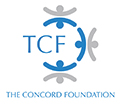What are CRIC researchers discovering about inter-group conflict? There is a dark side to the powerful bonds people develop toward their groups. When a group identity or its core values are perceived to be under existential threat, in-group bonds can be strong enough to motivate self-sacrificial acts ranging from taking a bullet for your regiment to suicide bombing. These bonds can also lead people to reject material trade-offs in ways that would seem irrational from a cost-benefit perspective.
CRIC’s mission is to promote and develop scientific, field-based research so that we can better understand the root causes and processes of intergroup violence and tackle violent conflicts more effectively in collaboration with the public policy community.
The work of CRIC addresses five main questions.
- Why do people and communities become involved in violent conflict, especially if it does not result in better social and economic circumstances?
- Why and under what circumstances do some violent community conflicts persist and defy resolution for long periods?
- How and why can some apparently intractable conflicts subsequently find resolution?
- What are the challenges of creating, conducting and completing such resolution processes?
- What can we learn from research, evidence-gathering and engagement in such situations of intractable conflict?
For more information on the development of CRIC: http://scholarworks.umb.edu/nejpp/vol29/iss1/3
Lord Alderdice, John, (2017) “Why We Have the Conference on the Resolution of Intractable Conflict,” New England Journal of Public Policy: Vol. 29 : Iss. 1 , Article 3.


